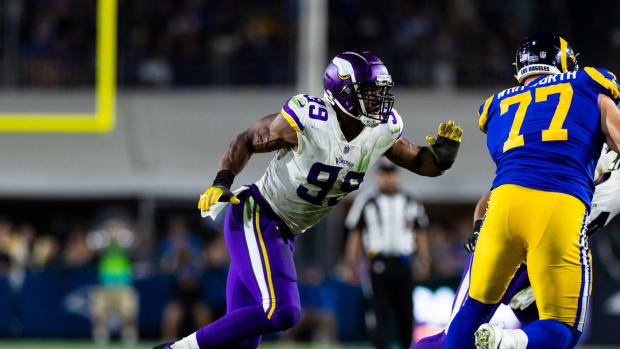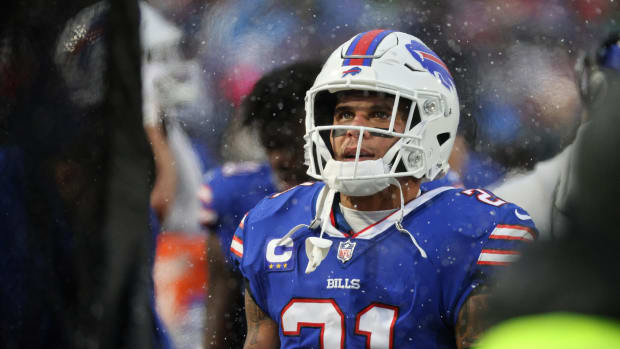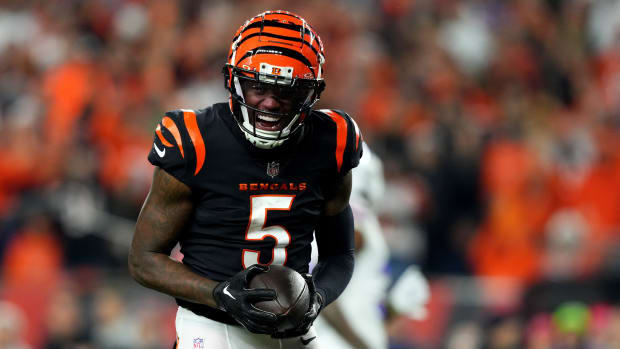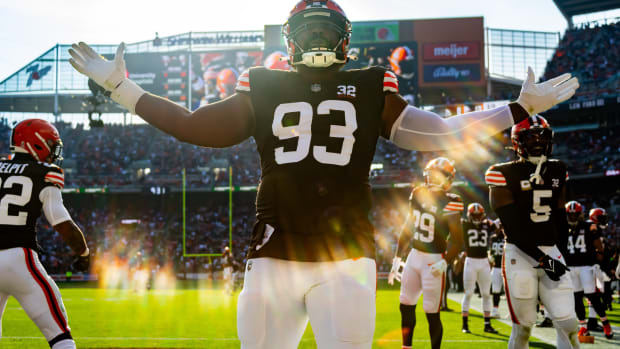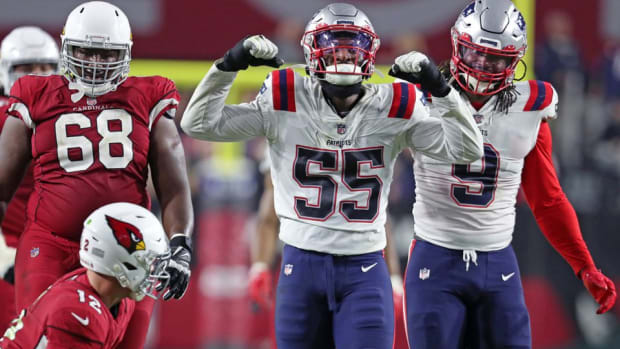Falcons-Seahawks II: Game of the Year Gets a Rematch
During the Seahawks-Lions telecast Saturday night, NBC played the video of Richard Sherman’s sideline blowup from back in October. Viewers saw the passionate superstar turn volatile, yelling at coordinator Kris Richard and getting nose to nose with Kam Chancellor.
This happened in Seattle’s narrow Week 6 home win over the Falcons. Sherman’s anger stemmed from the blown coverage that occurred on Julio Jones’s 36-yard touchdown. Shortly after that, there was a very similar blown coverage on tight end Levine Toilolo’s 46-yard TD.
In terms of strategic battles, Falcons offense vs. Seahawks defense was the best of the 2016 NFL season. Blown coverages are viewed as defensive mistakes, but in the NFL they’re often instigated by specific offensive tactics. That’s what happened here.
Nobody outside of the Seahawks knows Sherman and the rest of that defense better than Falcons head coach Dan Quinn, who coordinated it from 2013-14. That afternoon, Quinn and Kyle Shanahan, currently the NFL’s best offensive coordinator, did exactly what Quinn would not have wanted to see when he was calling Seattle’s defense. (Or exactly what he would not want to see now, considering he’s installed his Seahawks-style scheme in Atlanta.)
* * *
* * *
It started with what’s called “13” personnel. That’s one running back and three tight ends on the field. (That leaves just one wide receiver.) It’s typically a power-running package, but the Falcons had used a bevy of downfield pass designs from it—which were hugely successful, not just in this game but also previous weeks. In fact, in the first half of the season, before Jacob Tamme got hurt and the Falcons put much of the package on the back-burner, Matt Ryan completed 24 of 29 passes out of “13” personnel. The average completion went 18 yards. Seven of the completions went over 20 yards. Five of them resulted in touchdowns.
Defenses simply weren’t t set up to defend deep passes against “13.” This included Seattle… sort of. Where the Seahawks had trouble was not with the Falcons putting those three tight ends on the field, but rather, in where those three tight ends lined up.
On the Jones touchdown, tight end Austin Hooper motioned out wide, which turned Jones into the slot receiver. Hooper’s motion happened just before the snap. Just after the snap, Hooper and Jones ran intersecting routes, with Hooper going inside (a slant) and Jones going outside (a fade). The spacing and timing was precisely crafted to blur Sherman and the linebackers’ coverage responsibilities. The end result: Sherman chased the slant route, playing man coverage, and everyone else played zone. No one out of the zone coverage ran with Jones. Which meant the zone defenders had expected Sherman to stay in his zone outside.
Later in the game, the Falcons went with an empty backfield formation out of “13.” Think about it: a personnel package usually reserved for smashmouth running was now presented in a formation that posed no runner at all (literally—there’s no one to hand the ball to if it’s an empty backfield).
In that “empty 13” set the Falcons did the same pass concept as they did on the Jones TD. The widest-aligned receiver, which this time was Jones, ran inside (a slant). The next receiver in, Toilolo, who was not in the slot but rather in a regular line-of-scrimmage tight end position, ran outside (a fade route). Again Sherman chased the slant, and again no one covered the fade.
This gets to the downside of playing zone coverage: what happens when the offense uses a formation and route combination that blurs the lines between where one defender’s zone responsibility begins and another’s ends? Quinn and Shanahan knew exactly how to do that against Seattle, which runs a single-high-safety zone known as “Cover 3.”
After all the coverage confusion, Seahawks defensive coordinator Kris Richard changed thing up late in that game. On Atlanta’s final drive, the Seahawks played man-to-man on every snap. With the help of a controversial no-call on a pass interference, they got four straight stops and held on for a 26-24 victory.
Man coverage is something Richard continued to play as the season progressed, particularly on third down. Interestingly, so did Quinn. Because when the Falcons employed those Cover 3 zone-beating routes at Seattle, they tacitly reminded the rest of the NFL how to attack their Cover 3 foundation. This is why schemes must always evolve. And not just evolve as in switching from zone to man; there are a litany of well-known plays that beat man-to-man—just like there are a litany of well-known plays that beat every type of zone. Schemes must evolve within themselves. They must find nuanced ways to deal with the plays that attack them.
The Seahawks-Falcons battle is great because both sides know every detail of those nuances. Seattle’s Cover 3 has had to evolve a lot this season. So has Atlanta’s. Never will a game demand more creative evolution than the do-or-die battle between these clubs on Saturday.
Question or comment? Email us at talkback@themmqb.com.
































